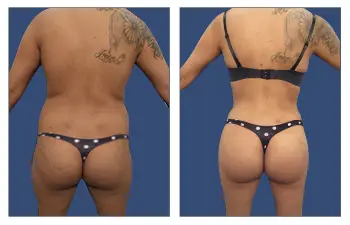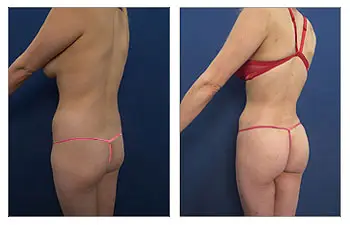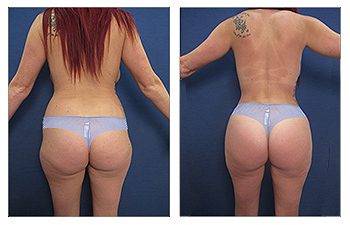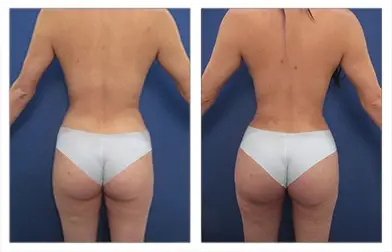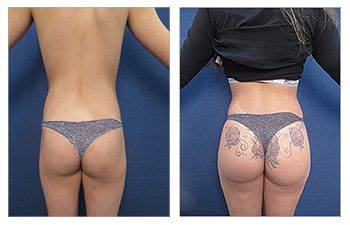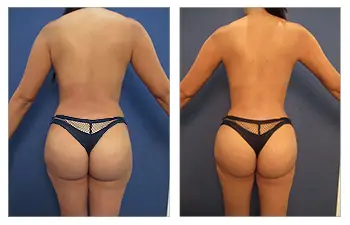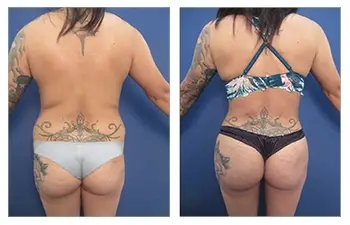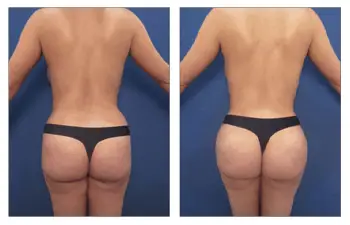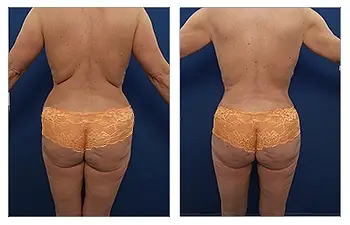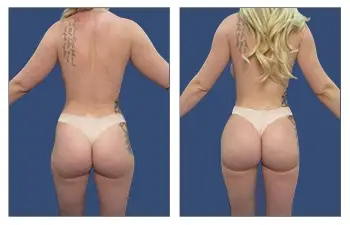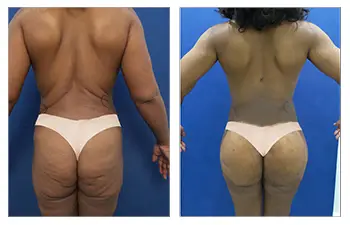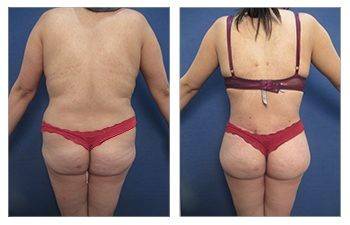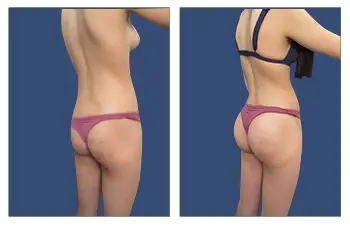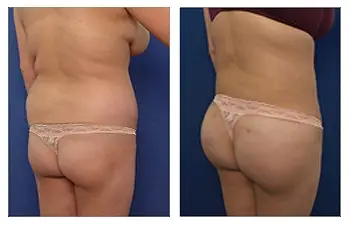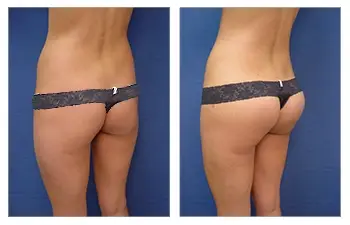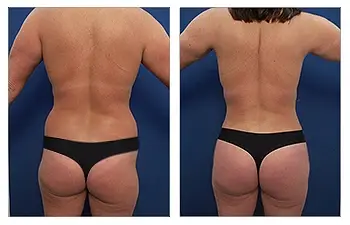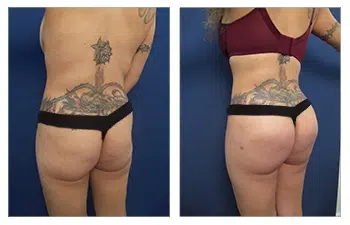Gluteal fold
The gluteal fold is formed by the fibrous attachment of the gluteal skin to the deep fascia, separating the upper thigh from the buttocks. This fold is an anatomical feature that plays a crucial role in supporting the body and providing mobility to the hips. However, it can also be a common area for fat accumulation, leading to challenges in getting rid of gluteal fold fat. Potential causes of gluteal fold pain may include muscle strains, injuries, or even deep gluteal fold syndrome. It is important to seek medical attention for symptoms such as numbness and discomfort, as these could indicate underlying issues that need to be addressed. This is why gluteal fold surgery is a relevant discussion.
Exercises like squats, lunges, and hip thrusts can help to strengthen and tone the muscles around the gluteal fold, while treatments like liposuction or body contouring procedures can help to eliminate excess fat in this area. Deep gluteal fold syndrome, which can be caused by conditions such as piriformis syndrome or sciatica, can also contribute to gluteal fold pain and discomfort. Understanding the potential causes and seeking proper treatment is essential for addressing issues related to the gluteal fold.
What is The Gluteal Fold?
The gluteal fold, also known as the gluteal sulcus, is a natural crease at the junction of the buttocks and the thighs. It is created by the underlying structures of the gluteal region, including the inferior border of the gluteus maximus muscle and the attachment of the hamstring muscles to the femur. The gluteal fold is an important anatomical landmark for surgeons and medical professionals.
The lower border of the gluteus maximus muscle is a separate anatomical feature that lies slightly above the gluteal fold. This muscle’s lower border can be palpated just below the fold.
Potential causes of gluteal fold pain may include piriformis syndrome, muscle strain, ligament sprain, or nerve compression. To address discomfort, individuals can perform stretches targeting the gluteal and hamstring muscles, use heat or ice therapy, and rest the affected area. It is important to seek medical attention if the pain is persistent or severe.
Diet to Reduce the Gluteal Fold
Incorporating a ketogenic diet is crucial for reducing gluteal fold fat as it focuses on consuming high fats, moderate protein, and very low carbs. This macronutrient ratio of 75% fats, 20% protein, and 5% carbs is essential for reaching the desired state of ketosis, where the body burns fat for fuel instead of carbs. By entering ketosis, the body becomes more efficient at eliminating fat, including in the gluteal region and throughout the body.
Keto foods such as avocados, nuts, and fish are rich in omega-3 fatty acids, which aid in fat elimination and provide numerous health benefits. Omega-3 fatty acids have been shown to reduce inflammation, improve heart health, and support weight loss. By incorporating these foods into a ketogenic diet, individuals can optimize their fat-burning potential and target stubborn gluteal fold fat.
Overall, the ketogenic diet, with its specific macronutrient ratio and emphasis on omega-3-rich foods, is a powerful tool for reducing gluteal fold fat and achieving overall fat elimination throughout the body.
Pain At The Gluteal Fold
Pain at the gluteal fold can manifest in various ways, including numbness, difficulty sitting, and lower back pain. This discomfort may be indicative of conditions such as deep gluteal syndrome, piriformis syndrome, and pinched nerves. Deep gluteal syndrome involves the compression of the nerves and blood vessels in the buttock area, leading to symptoms like tingling, numbness, and pain. Piriformis syndrome is characterized by the irritation of the piriformis muscle, which can cause pain and numbness in the buttocks and down the leg. Pinched nerves in the lower back can also result in pain at the gluteal fold, contributing to overall discomfort.
To alleviate this pain, incorporating specific stretches and exercises can be beneficial. Stretching the glutes, hips, and lower back can help alleviate tightness and improve flexibility, while exercises that strengthen the gluteal muscles can provide support and reduce pressure on affected areas. Some potential stretches include the pigeon pose, seated figure-four stretch, and supine piriformis stretch. Additionally, exercises like bridges, clamshells, and hip abductions can aid in promoting healing and relieving discomfort in the gluteal area.
Incorporating these stretches and exercises into a regular routine can help manage gluteal fold pain and improve overall mobility and comfort.
Surgery To Correct Gluteal Fold
Gluteal fold surgery to correct the gluteal fold is a procedure aimed at addressing the appearance of the buttocks and surrounding areas. This surgical intervention involves a combination of techniques to improve the contour and symmetry of the gluteal region. The procedure is commonly sought after by individuals who are unhappy with the natural or acquired shape of their buttocks and wish to achieve a more aesthetically pleasing appearance. Whether it’s due to genetics, weight fluctuations, or aging, this surgery can help to define the gluteal fold, reduce excess skin, and enhance the overall shape of the buttocks. In the following headings, we will explore the different aspects of this surgery, including the candidacy, procedure, recovery, and potential risks.
Gluteal Fold Surgery with Liposuction
Gluteal fold liposuction is a surgical option for gluteal fold surgery aimed at reshaping the gluteal smile line by removing excess fat deposits in the gluteal area. The process involves the use of Ultra-Z liposuction, which incorporates ultrasonic lipolysis to break down and suction out fats adjacent to the gluteal folds. This technique also utilizes the thermal effect of an ultrasonic probe to prompt the adhesion of the skin dermis to the deep muscular fascia, resulting in a smoother and more defined gluteal contour.
Factors affecting the gluteal shape include genetics, aging, and weight fluctuations, which can accumulate stubborn fat in the gluteal fold area. Suitable patient populations for gluteal smile line liposuction include individuals who are within their ideal body weight but have localized fat deposits in the gluteal region. The indications for this procedure may include dissatisfaction with the appearance of the gluteal smile line, despite efforts through diet and exercise.
In summary, gluteal fold liposuction using the Ultra-Z technique is an effective method for reshaping the gluteal smile line by addressing localized fat deposits in the gluteal fold area, with suitable indications for individuals seeking to improve the contour of their buttocks.
Gluteal Fold Surgery with Renuvion
Gluteal Fold Surgery with Renuvion is a gluteal fold surgery option as a minimally invasive treatment that effectively removes excess fat from the gluteal fold area, using radiofrequency-assisted liposuction to tighten the skin and contour the buttocks. This innovative procedure targets the area below the buttocks, known as the banana roll, to reduce excess fat and improve overall body shape.
Utilizing radiofrequency energy, Gluteal Fold Renuvion melts and removes unwanted fat while simultaneously tightening and smoothing the skin, resulting in a more toned and defined buttock area. The procedure is performed under local anesthesia, minimizing discomfort and downtime for the patient.
By combining the benefits of radiofrequency energy and liposuction, Gluteal Fold Renuvion offers a safe and effective way to permanently remove gluteal fold fat and enhance the overall appearance of the buttocks. With minimal scarring and a quick recovery time, this treatment is becoming increasingly popular for those seeking a more sculpted and contoured buttock area.
Gluteal Fold Surgery with Attiva
The Gluteal Fold Surgery with Attiva is a gluteal fold surgery option that is a surgical procedure designed to create a natural horizontal gluteal crease between the buttock and the thigh. This is achieved through techniques such as liposuction to remove excess fat and gluteal reshaping to enhance the overall contour of the buttocks.
The purpose of the Gluteal Fold Attiva is to address aesthetic concerns related to the contour of the buttocks and thighs, ultimately boosting self-confidence and improving body image. This procedure holds significant importance in the field of plastic surgery as it offers individuals the opportunity to enhance their physical appearance and achieve their desired aesthetic goals.
Potential candidates for the Gluteal Fold Attiva are individuals who are bothered by the lack of a defined gluteal fold and seek to improve the overall shape and contour of their buttocks. Factors that make someone suitable for this procedure may include good overall health, realistic expectations, and a commitment to maintaining a healthy lifestyle post-surgery. It is crucial for individuals considering the Gluteal Fold Attiva to consult with a trusted plastic surgeon for a thorough evaluation and personalized treatment plan.
Butt Tuck to treat Gluteal Fold
Butt tuck, also known as gluteoplasty, is a gluteal fold surgery option that involves a surgical procedure aimed at treating the gluteal fold by removing excess skin and fat from the buttocks to create a smoother and more contoured appearance. This procedure is typically performed by a skilled plastic surgeon who can reshape and tighten the gluteal area to achieve the desired results.
During the butt tuck surgery, the plastic surgeon will make incisions to remove the excess skin and fat, and then reposition and tighten the remaining tissues to create a more lifted and toned appearance. This procedure can help to address sagging or drooping buttocks, as well as improve the overall shape and contour of the gluteal area.
While butt tuck surgery can provide significant benefits such as improved self-confidence and body image, it also comes with potential risks such as infection, scarring, and asymmetry. It’s essential for individuals considering this procedure to thoroughly discuss the potential benefits and risks with a qualified plastic surgeon and carefully weigh their options before proceeding with the surgery. Overall, butt tuck surgery can be an effective way to enhance the appearance of the buttocks and address concerns related to the gluteal fold.
Conclusion: Gluteal Fold Surgery
In conclusion, gluteal fold surgery, including options such as butt implants and liposuction, can greatly enhance the appearance of the buttocks for those seeking to improve their gluteal shape. Butt implants involve the insertion of silicone implants to add volume and enhance the projection of the buttocks. On the other hand, liposuction can be used to remove excess fat and sculpt the buttocks for a more defined appearance.
The potential benefits of gluteal fold surgery include increased self-confidence, improved body proportions, and the ability to achieve the desired buttock shape that may not be attainable through diet and exercise alone. Factors such as genetics, aging, weight fluctuations, and pregnancy can impact the shape of the gluteal fold, making surgical methods an attractive option for reshaping the buttocks.
It is important to consult with a board-certified cosmetic or plastic surgeon to determine the most suitable surgical method based on individual goals and anatomical considerations. The surgeon will assess the patient’s unique needs and provide personalized recommendations for achieving the desired gluteal shape through surgery.

